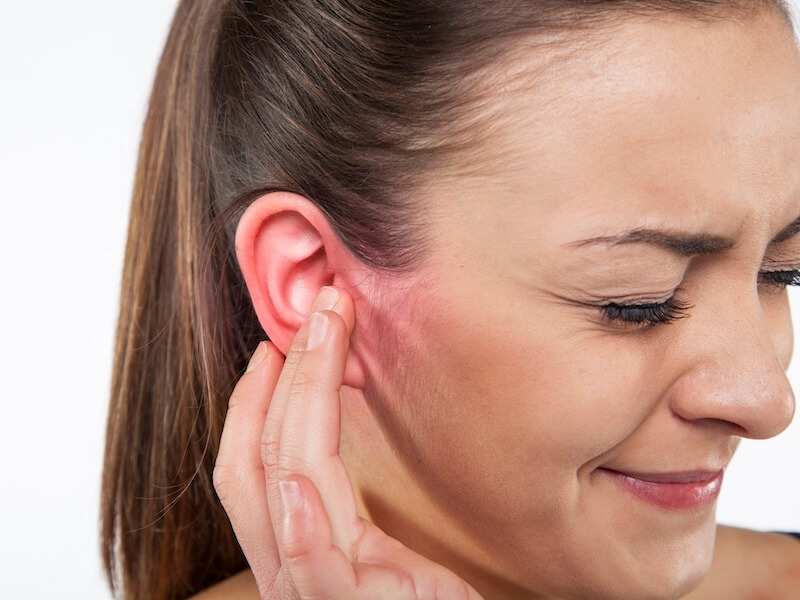
Surprisingly, around 20% of all ear infections afflict adults. The common notion is that ear infections are something that normally impact children. Ear infections are certainly more prevalent in children but adults do get them too.
Ear infections can be particularly unpleasant for individuals who have hearing loss because they can interfere with their hearing aids. Hearing aids can also shelter germs that could lead to an ear infection if they aren’t correctly cleaned and maintained.
So is it a bad plan to use hearing aids with an ear infection? You can, but it might not be something you want to do. Hearing aids could aggravate the discomfort and swelling caused by an ear infection. However, there are some steps that those who use hearing aids can take to help avoid and treat ear infection symptoms.
Can an ear infection be caused by hearing aids?
If you’re an adult with hearing loss and you begin to notice the symptoms of an ear infection, you might begin to wonder: did my hearing aids cause my ear infection? Technically, the answer is no. But in order to get the full picture we have to look at it in greater detail.
The vast majority of all ear infections are caused by viruses or bacteria that then infect the inner ear. There are a wide variety of vectors that can result in infection. Sometimes, a previous illness, such as a cold or sinus infection, will result in an infection of the inner ear. In other cases, fluid buildup might lead to an infection. And it’s also certainly possible for viruses and bacteria to infect the inner ear via direct transmission.
This can happen with some frequency to people who use hearing aids. Your hearing aid accumulates this bacteria or virus and then gets inserted directly into your ear. That’s why it is crucial for people with hearing impairments to properly maintain and clean their devices. Essentially, the hearing aid itself does not cause the ear infection, the virus or bacteria does. But your hearing aid does play a part in this transmission.
How ear infections interact with hearing aids
So what is the degree of interaction between hearing aids and ear infections? To understand what to expect, it’s helpful to look at the most common symptoms of an ear infection. Here are some of the most common symptoms of ear infections:
- Tinnitus (a ringing in the ears)
- A feeling of fullness or pressure in the ears
- Ear pain
- In some situations, temporary hearing loss
- Swelling and inflammation
- Drainage of fluid from the ear
- Dizziness or vertigo
Not everyone will suffer from every symptom, of course. Typically, you will have obvious inflammation of the inner ear and ear pain in the infected ear. These symptoms can have an adverse interaction with hearing aids for individuals with hearing loss. That’s because the hearing aid is inside the infected ear (at least some of it). Because the ear canal is inflamed and tender, your hearing aids could cause extra discomfort.
Additionally, any in-the-canal hearing aid can prevent drainage. When fluids cannot drain, your discomfort may become prolonged. The pain and pressure in your ears will be increased as a result of this. This pressure can be even more pronounced when you’re wearing your hearing aid.
This added moisture can also impair the operation of your hearing aid. So your hearing aids aren’t functioning at peak performance and your ears are in pain. This means that you will have a horrible time wearing your hearing aid while you have an ear infection.
Solutions to wearing hearing aids with an ear infection
So what can you do if your hearing aids are bothering you during an ear infection? You can reduce your risk of getting an ear infection and manage any discomfort that an ear infection may cause by taking a few steps. Those steps include the following:
- Regularly clean your hearing aids: Keeping your device clean can reduce the chance of transmitting bacteria or viruses to your ears. Ask us for assistance if you’re not certain how to correctly clean and sanitize your hearing aids.
- Practice good ear hygiene: It’s important to keep your ears dry and clean and routinely clean your outer ear. However, you should never stick any object in your ear and that includes cotton swabs. Using cotton swabs can drive earwax and other debris further into your ear, increasing your chance of developing an infection. This is the exact opposite of what you’re likely trying to accomplish.
- Take breaks from wearing your hearing aids: If the pain is persistent or severe, it’s all right to take a break from wearing your hearing aid until your ears are feeling better. During this interim period, you can adopt other means of communicating with your loved ones (such as texting or writing messages on a piece of paper, and so on).
- Talk to your healthcare provider: If you think that you have an ear infection, speak with your doctor as soon as you can. The sooner you treat the ear infection, the less severe or prolonged your symptoms may be.
- Talk to your hearing specialist: Consider coming in to have your hearing aid re-fit if your ear infection clears but your hearing aid is still uncomfortable.
You probably depend heavily on your hearing aid every day. They help you communicate with family and friends and move about the world more easily. That makes it really difficult to give up your hearing aid even for short periods. However, you will have a faster recovery from your ear infection if you take a break from wearing them until you heal up. This will help you get back to feeling better sooner.
Ear infections are relatively common. But you should still get treatment if you notice symptoms. Contact us if you’re wondering how your hearing aid use will be affected by an ear infection.